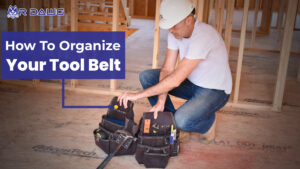
Father’s Day Gift Guide For Carpenters
Father’s Day is just around the corner, and it’s time to show appreciation for the man who has always been there to fix things around
Knowing what nail fastener to use for your DIY or home improvement project can be confusing at times. You want to make sure it is strong enough to hold the structure, but not too big that it sticks out. Also, the different types of materials used which are suited for different situations like concrete, rain, roofing, and more can be confusing.
Sizing Nails Properly:
The first thing to understand is their size. Generally, the accepted rule is that a nail should be a bit more than 2 times the materials intended width. For example, if you need to go through a 1.5” piece of wood (standard 2×4), you want a 3” nail or bigger- and the standard size for it is 3.5”.
While inches may seem the most intuitive to measure, the standard method is with ‘pennies’ long. A chart is listed below of the conversion where d is pronounced penny. The most important ones to know are usually 4d- 1.5”, 8d-2.5”, and most used in construction especially when working with dimensional 2×4 lumber- the 3.5 inches 16 penny.
2d = 1inch 9d = 2 ¾ inches
3d = 1 ¼ inches 10d = 3 inches
4d = 1 ½ inches 12d = 3 ¼ inches
5d = 1 ¾ inches 16d = 3 ½ inches
6d = 2 inches 20d = 4 inches
7d = 2 ¼ inches 30d = 4 ½ inches
8d = 2 ½ inches 40d = 5 inches
Choosing the right nail for the job can make a big difference in holding power, appearance, and use case. Nails have come a long way and can work wonders for their specific use- but you wouldn’t use a roofing nail to finish a house because of its large head. It is important to know these differences so you will know what to use when you build.
When a nail is driven through a piece of wood, it cuts through the very fibers that form the grain. If a nail is pulled out, the fibers tend to jam against the sides of the nail and lock it in place. This is the reason why nails are very effective in fastening wood.
To drive nails effectively, check out what type of hammer is needed for your project.


Father’s Day is just around the corner, and it’s time to show appreciation for the man who has always been there to fix things around

The importance of safety on the job cannot be overstated. A safe work environment protects employees from harm, reduces the likelihood of workplace accidents, and

Tool belt accessories are designed to provide additional storage, organization, and convenience for workers, carpenters, and DIYers who need to carry tools and supplies on

A tool belt is an essential piece of equipment for many trades and DIY projects. A tool belt that is organized allows you to keep

Tool belts are an essential part of any construction project. They help you work more efficiently and safely while on the job. A tool belt

There are different types of tool belts. The tool belt is a fantastic item to carry all the necessary tools at hand. It is much
We asked 100+ professional carpenters, woodworkers, and construction workers to help you decide the best tool belt for you.
1 thought on “Choosing The Right Nail For The Job”
Pingback: 10 Tips To Keep Woodworkers Safe - R Dawg